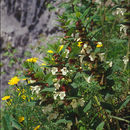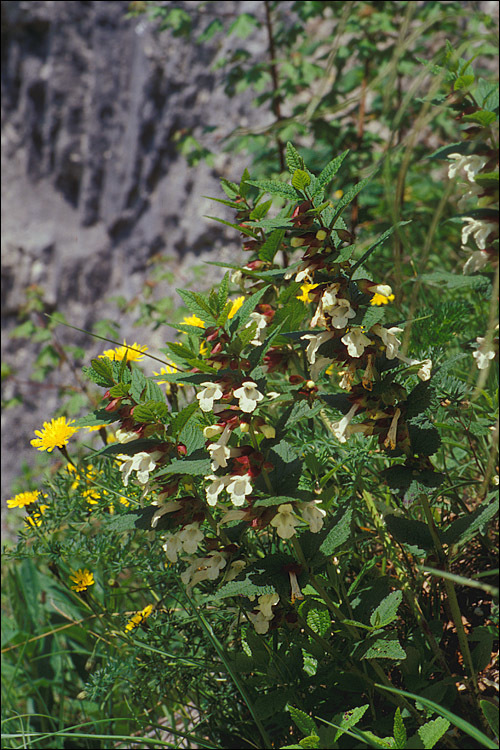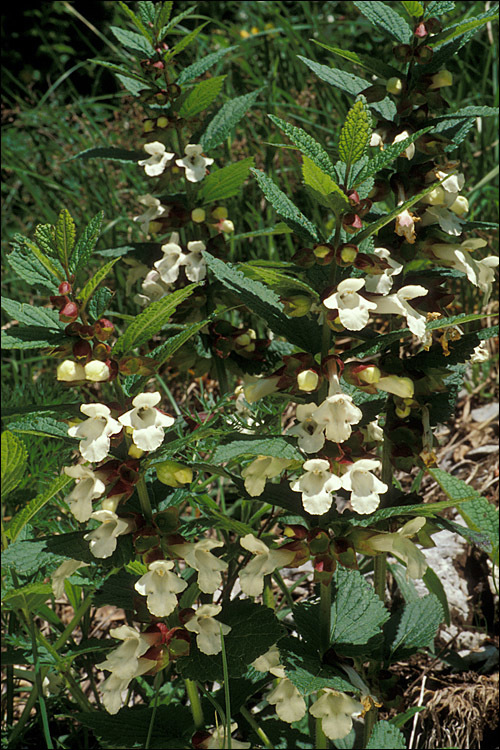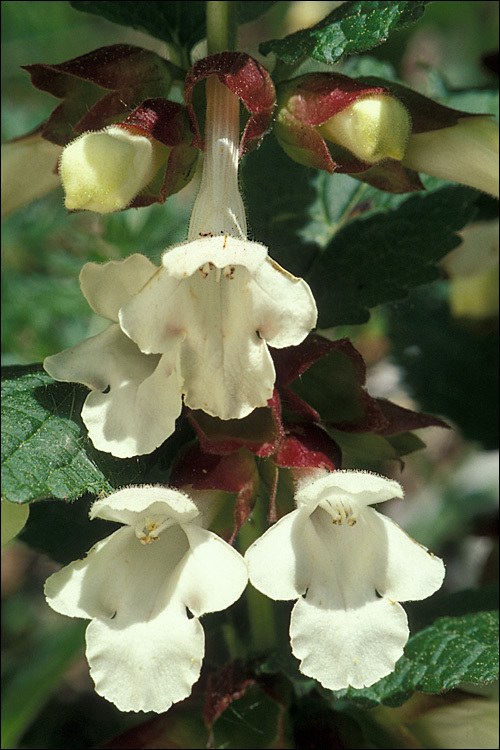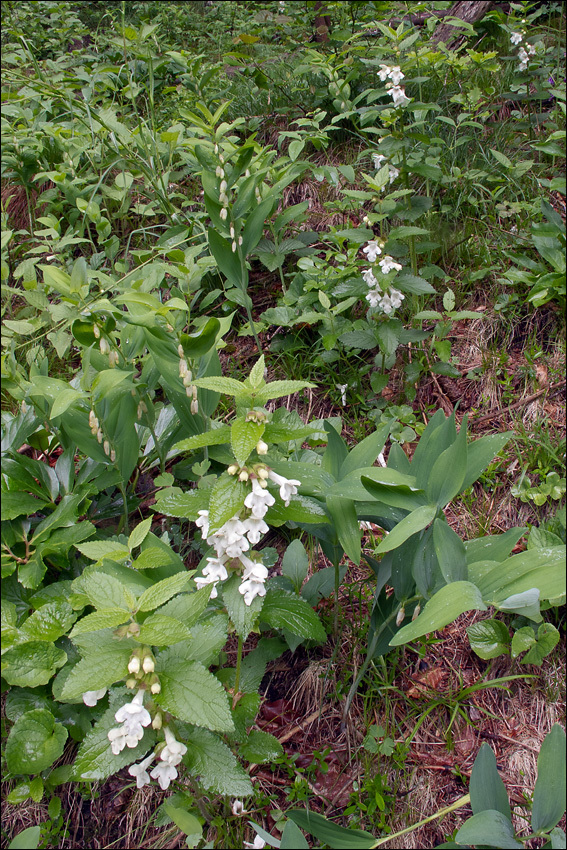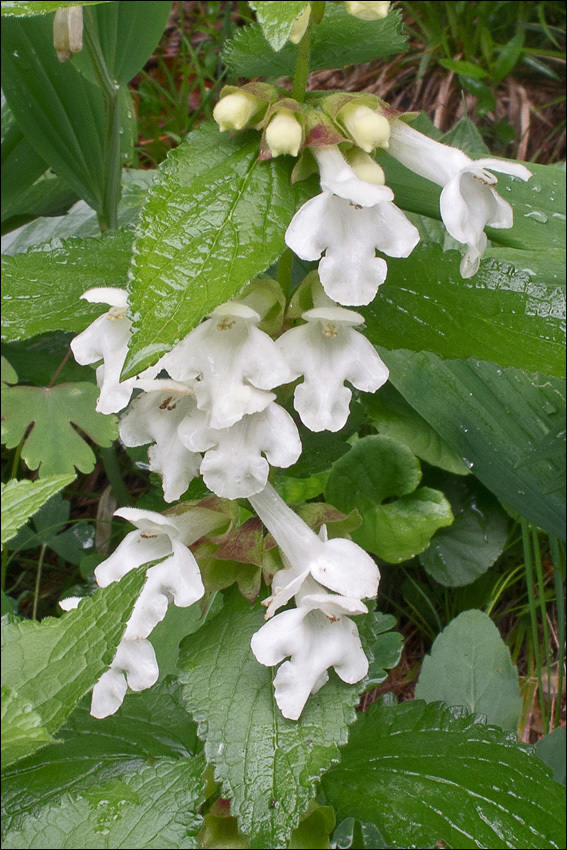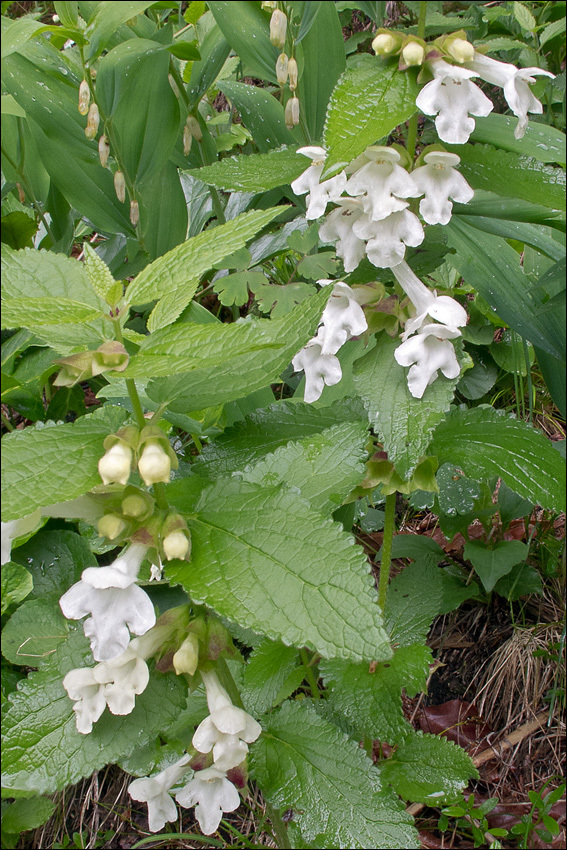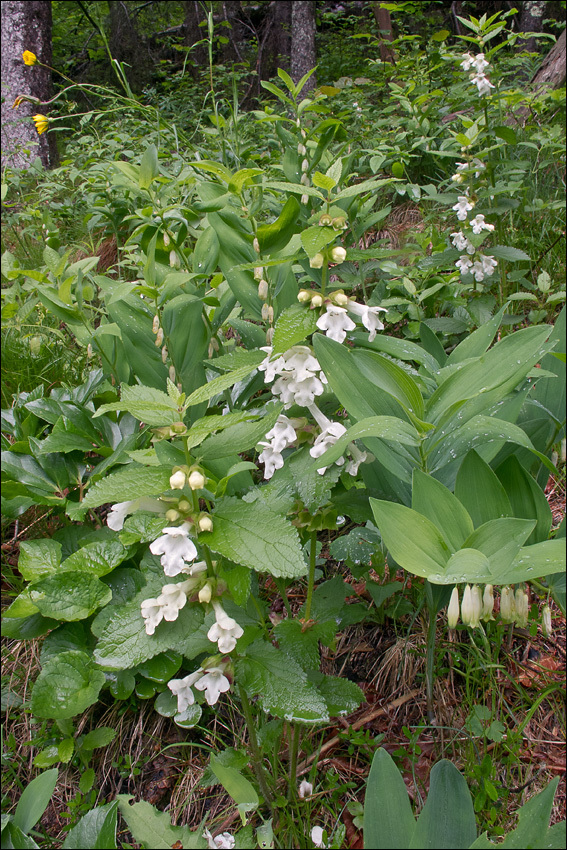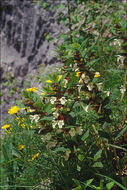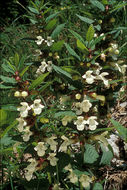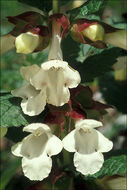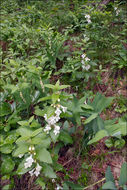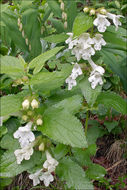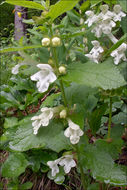-
Slo.: navadna medenika
-
Slo.: navadna medenika
-
Slo.: navadna medenika
-
Slo.: navadna medenika
-
Slo.: navadna medenika - Habitat: Light mixed wood, predominantly Picea abies and Fagus sylvatica, south oriented steep river bank, partly in shade but warm place, high air humidity, calcareous river deposits, partly protected from direct rain by tree canopies, average precipitations ~ 3.000 mm/year, average temperature 8-10 deg C, elevation 400 m (1.300 feet), alpine phytogeographical region. - Substratum: forest soil. - Comment: Growing solitary and in groups of many plants. These are completely white flowering plants. Pink or purple-violet punctuated forms also exist. They are more common in more northern regions (Re.: 1). - Ref.: (1) M.A.Fischer, W.Adler, K.Oswald, Exkursionsflora Oesterreich Liechtenstein, Suedtirol, LO Landesmuseen, Linz, Austria (2005), p 773. (2) A.Martinči et all., Mala Flora Slovenije, Tehnična Zaloba Slovenije (2007), p 594.
-
Slo.: navadna medenika - Habitat: Light mixed wood, predominantly Picea abies and Fagus sylvatica, south oriented steep river bank, partly in shade but warm place, high air humidity, calcareous river deposits, partly protected from direct rain by tree canopies, average precipitations ~ 3.000 mm/year, average temperature 8-10 deg C, elevation 400 m (1.300 feet), alpine phytogeographical region. - Substratum: forest soil. - Comment: Growing solitary and in groups of many plants. These are completely white flowering plants. Pink or purple-violet punctuated forms also exist. They are more common in more northern regions (Re.: 1). - Ref.: (1) M.A.Fischer, W.Adler, K.Oswald, Exkursionsflora Oesterreich Liechtenstein, Suedtirol, LO Landesmuseen, Linz, Austria (2005), p 773. (2) A.Martinči et all., Mala Flora Slovenije, Tehnična Zaloba Slovenije (2007), p 594.
-
Slo.: navadna medenika - Habitat: Light mixed wood, predominantly Picea abies and Fagus sylvatica, south oriented steep river bank, partly in shade but warm place, high air humidity, calcareous river deposits, partly protected from direct rain by tree canopies, average precipitations ~ 3.000 mm/year, average temperature 8-10 deg C, elevation 400 m (1.300 feet), alpine phytogeographical region. - Substratum: forest soil. - Comment: Growing solitary and in groups of many plants. These are completely white flowering plants. Pink or purple-violet punctuated forms also exist. They are more common in more northern regions (Re.: 1). - Ref.: (1) M.A.Fischer, W.Adler, K.Oswald, Exkursionsflora Oesterreich Liechtenstein, Suedtirol, LO Landesmuseen, Linz, Austria (2005), p 773. (2) A.Martinči et all., Mala Flora Slovenije, Tehnična Zaloba Slovenije (2007), p 594.
-
Slo.: navadna medenika - Habitat: Light mixed wood, predominantly Picea abies and Fagus sylvatica, south oriented steep river bank, partly in shade but warm place, high air humidity, calcareous river deposits, partly protected from direct rain by tree canopies, average precipitations ~ 3.000 mm/year, average temperature 8-10 deg C, elevation 400 m (1.300 feet), alpine phytogeographical region. - Substratum: forest soil. - Comment: Growing solitary and in groups of many plants. These are completely white flowering plants. Pink or purple-violet punctuated forms also exist. They are more common in more northern regions (Re.: 1). - Ref.: (1) M.A.Fischer, W.Adler, K.Oswald, Exkursionsflora Oesterreich Liechtenstein, Suedtirol, LO Landesmuseen, Linz, Austria (2005), p 773. (2) A.Martinči et all., Mala Flora Slovenije, Tehnična Zaloba Slovenije (2007), p 594.
-
Slo.: navadna medenika - Habitat: Light mixed wood, predominantly Picea abies and Fagus sylvatica, south oriented steep river bank, partly in shade but warm place, high air humidity, calcareous river deposits, partly protected from direct rain by tree canopies, average precipitations ~ 3.000 mm/year, average temperature 8-10 deg C, elevation 400 m (1.300 feet), alpine phytogeographical region. - Substratum: forest soil. - Comment: Growing solitary and in groups of many plants. These are completely white flowering plants. Pink or purple-violet punctuated forms also exist. They are more common in more northern regions (Re.: 1). - Ref.: (1) M.A.Fischer, W.Adler, K.Oswald, Exkursionsflora Oesterreich Liechtenstein, Suedtirol, LO Landesmuseen, Linz, Austria (2005), p 773. (2) A.Martinči et all., Mala Flora Slovenije, Tehnična Zaloba Slovenije (2007), p 594.

